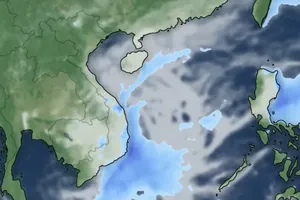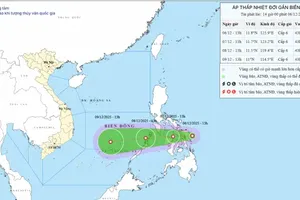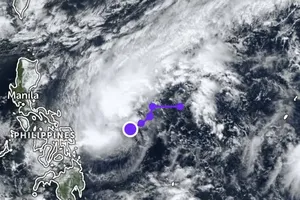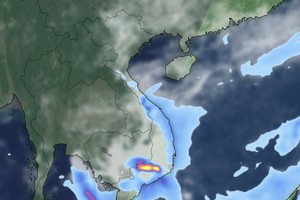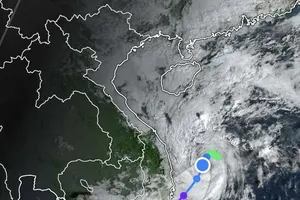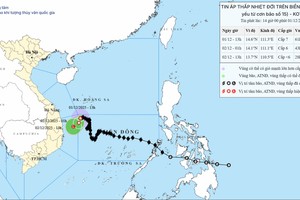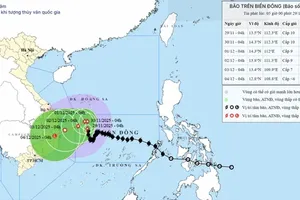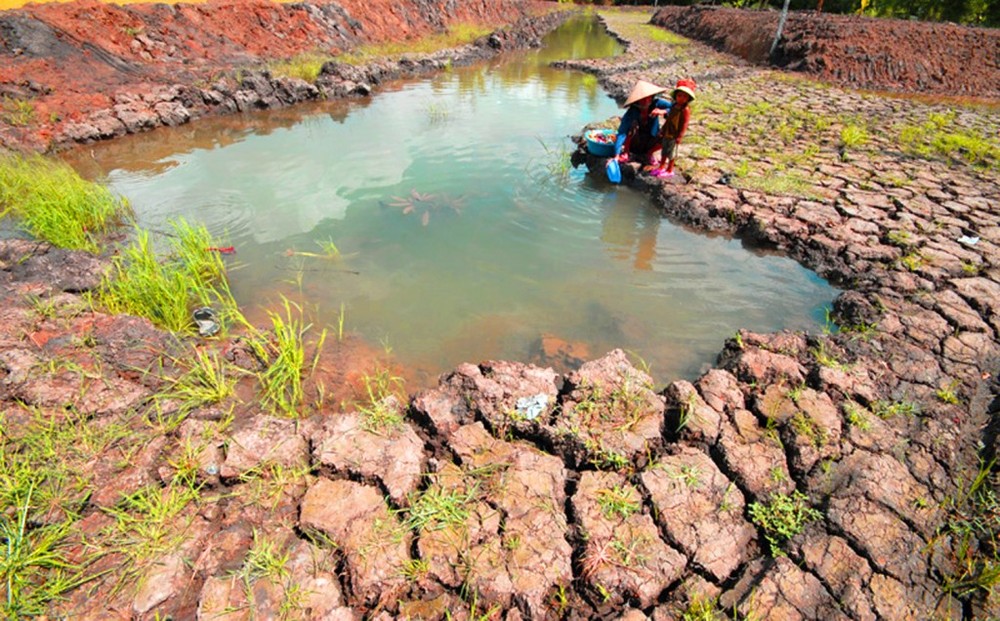
Saltwater intrusion in the Mekong Delta is predicted to increase from February 11 to 16 and gradually decrease. The highest salinity levels at major stations are lower compared to February 2024. Some areas in Ca Mau Province have recorded higher salinity levels.
The current hydrological situation shows that water levels on the Tien and Hau rivers fluctuate according to the tides. The highest water level measured at Tan Chau monitoring station is 1.55 meters and 1.75 meters at Chau Doc station, 0.2–0.3 meters higher than the average water levels in previous years.
The tide in Ba Ria–Vung Tau Province’s beaches remains high, with the highest level ranging from 3.9 meters to 4 meters and 0.5 meters to 0.6 meters in Rach Gia City of Kien Giang Province.
Saltwater encroachment through river mouths in the Mekong Delta is also expanding with a 4-percent extent of salinity inland of 30-55 kilometers. Specifically, water with salinity intrudes 40-45 km in the Vam Co Dong, Vam Co Tay, Ham Luong, and Co Chien rivers, and 30-40 km in the Cai Lon River.
According to the National Center for Hydro-Meteorological Forecasting, the extremity of salinity has occurred on February 10-16 and February 27–March 4 at the river mouths in the Mekong Delta. Meanwhile, the Vam Co and Cai Lon rivers will be significantly affected in March and April.
The National Center for Hydro-Meteorological Forecasting recommended that coastal communities should proactively store fresh water for domestic use during low tide periods.
The Mekong Delta needs to regularly update and evaluate forecasts to plan appropriate response measures, especially in coastal areas and regions that are likely to be strongly affected by saltwater intrusion.


